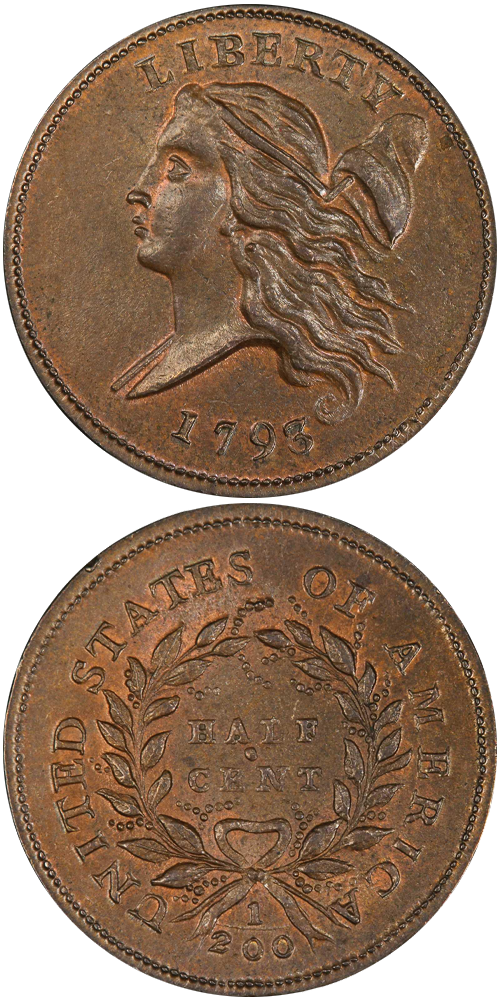1793 Flowing Hair Half Cent
The debut half cent issue was recognized as a rarity even as half cents still circulated. In 1855, in one of the first major numismatic auctions held in the United States, the Pierre Flandin sale, collector Winslow Howard paid $7 for a lot of two half cents of 1793, a stunning sum less than 60 years after the coin was issued. As interest and knowledge blossomed in the late 1850s, collectors found that few high-grade specimens were around, and the most dedicated seekers continued to pay strong premiums for the best examples. Today, we know no 1793 half cent was preserved by William Strickland for the collection that became known as the Lord St. Oswald collection. Unlike some other issues, the 1796 half cent among them, no notable high-grade pieces appeared from English or European sources in the 20th century. Not a single specimen is known today with a preponderance of its mint color. Since few were saved in 1793, most modern survivors were plucked from circulation by the small number of numismatists who began to divide rarities from common issues in the decade before the Civil War, resulting in a collectible population today that is almost entirely in circulated grades.
Despite their rarity, the half cents of 1793 remain somewhat overshadowed by the cents of that year. They stand on equal footing as the only denominations struck in the U.S. Mint’s first full year of operation. Their histories are similarly robust, and the cents and half cents of 1793 both deserve plaudits as the first years of their denominations. 1793 half cents, like the Chain and Wreath cents of 1793, are rare one-year type coins required to complete a collection by design type. Their desirability transcends the world of copper coin specialists and deserves a pedestal coequal to the other prime rarities of this date.
The example to the left was sold by Stack's Bowers Galleries in the D. Brent Pogue Part III Auction, where it realized $446,500.






